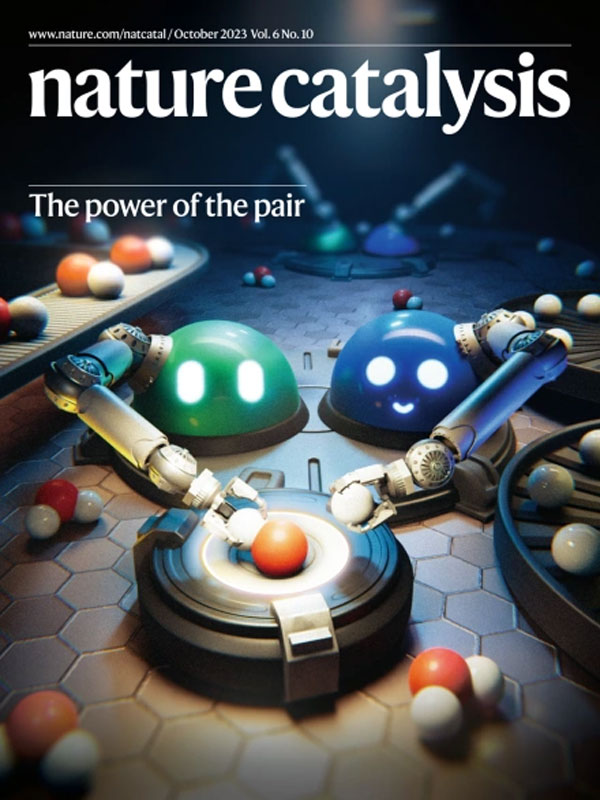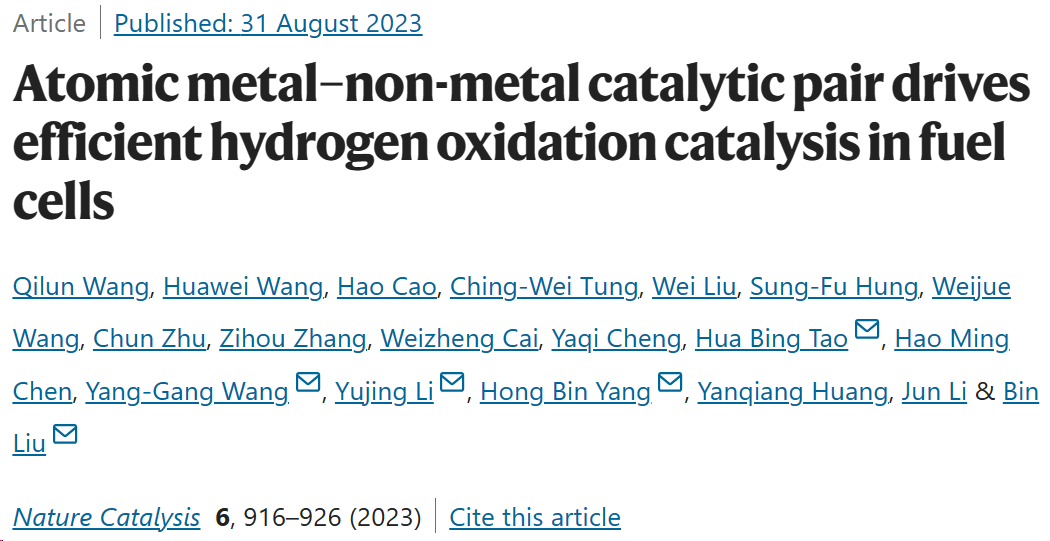Nature Catalysis中稿封面
Oct 24,2023
The image designed by Sphere Studio is selected as the Cover of Nature Catalysis in October.
Achieving high atomic dispersion of precious-metal catalytic species is a promising strategy in terms of sustainability and cost-effectiveness, but preserving a high catalytic performance is often challenging. Now, Bin Liu, Hong Bin Yang, Yujing Li, Yang-Gang Wang, Hua Bing Tao and colleagues show that adjacent iridium and phosphorus atomic pairs dispersed onto a N-doped carbon support exhibit high performance for the hydrogen oxidation reaction, while iridium single atoms on the same support but in the absence of P are effectively inactive.

Abstract
Rational design of efficient hydrogen oxidation reaction (HOR) electrocatalysts with maximum utilization of platinum-group metal sites is critical to hydrogen fuel cells, but remains a major challenge due to the formidable potential-dependent energy barrier for hydrogen intermediate (H*) desorption on single metal centres. Here we report atomically dispersed iridium–phosphorus (Ir–P) catalytic pairs with strong electronic coupling that integratively facilitate HOR kinetics, in which the reactive hydroxyl species adsorbed on the more oxophilic P site induces an alternative thermodynamic pathway to facilely combine with H* on the adjacent Ir atom, whereas isolated single-atom Ir catalysts are inactive. In H2–O2 fuel cells, this catalyst enables a peak power density of 1.93 W cm−2 and an anodic mass activity as high as 17.11 A mgIr−1 at 0.9 ViR-free, significantly outperforming commercial Pt/C. This work not only advances the development of anodic catalysts for fuel cells, but also provides a precise and universal active-site design principle for multi-intermediate catalysis.

PREV: empty

